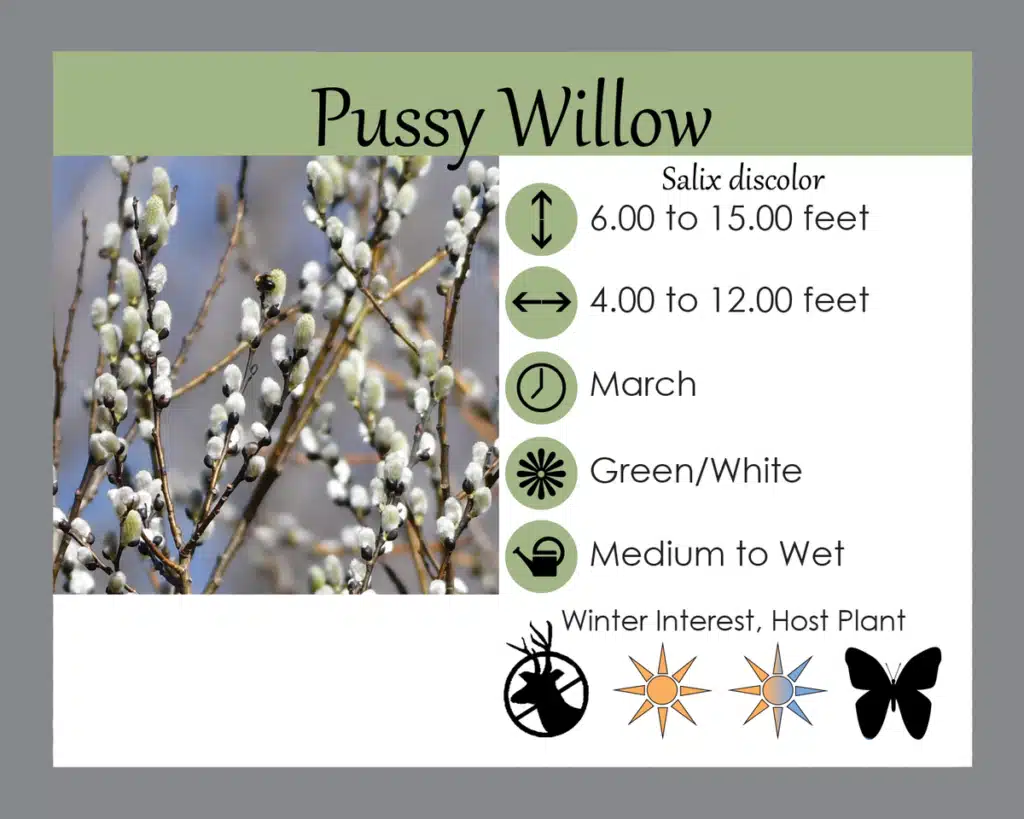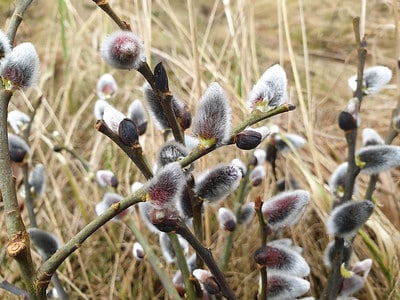Maryland Native Plant for Winter Interest
Salix discolor – Pussy Willow
Salix discolor – pussy willow ranges from Nova Scotia to Maryland. It is typically found growing in moist to wet soils in meadows and swamps along lakes and streams, but also will be found in some drier conditions. This is a dioecious species that is most often seen as a large multi-stemmed shrub to 6-15’ tall. Before the foliage emerges in late winter, male trees produce a showy display of catkins (1-1.5” long) that are pearl gray and silky.
Female trees produce smaller, less attractive, greenish catkins. Male pussy willows are noted for producing ornamentally attractive silky pearl gray catkins on leafless stems in late winter to early spring. Elliptic to lanceolate leaves with irregular marginal teeth are dull medium green above and glaucous beneath. Variable fall color is usually an undistinguished greenish-yellow. Early flowers are a valuable nectar and pollen source for bees. Salix discolor is a host plant to the Mourning Cloak & Viceroy butterflies.
LGS Notes: “Salix discolor brings a lot of joy to the garden on dreary late winter days and its deep roots are great for stabilizing stream and pond banks.” – Perri


